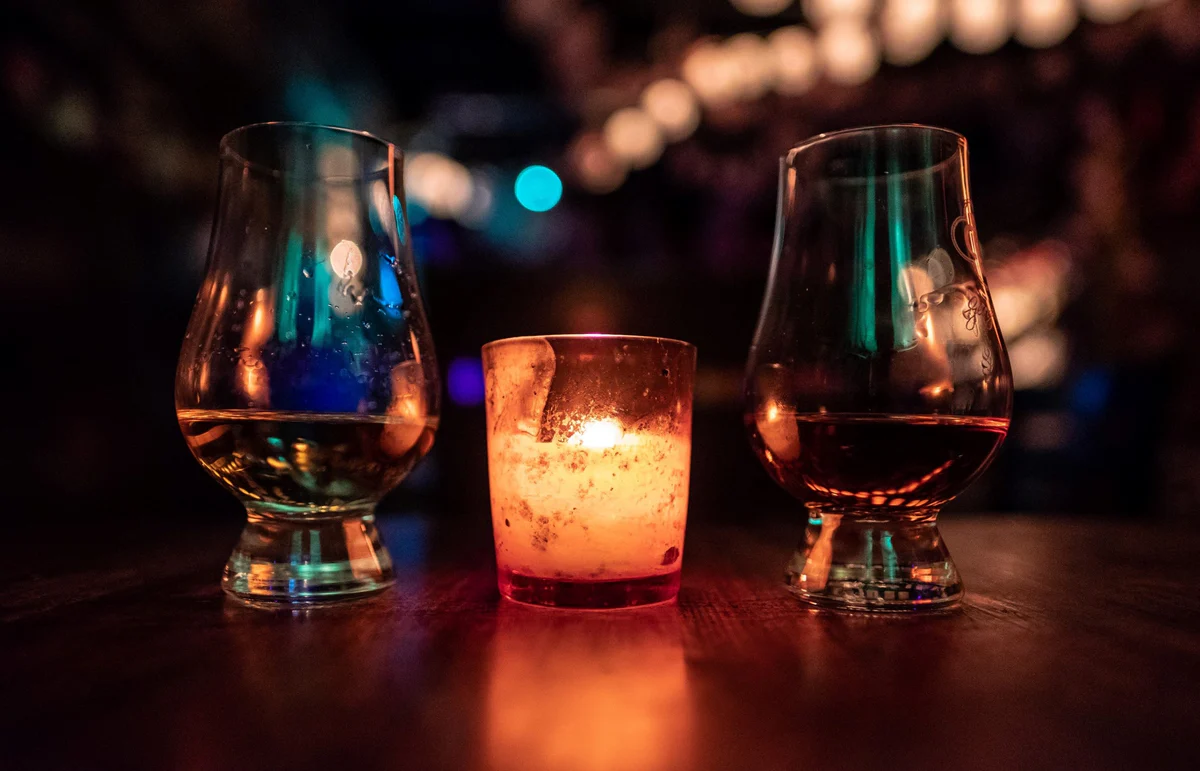
Tasting whiskey properly: A journey through the world of aromas
|
|
Time to read 4 min
|
|
Time to read 4 min
Whisky, the golden elixir, is not just an alcoholic beverage, it is an art form. Whiskey tasting is a unique experience that delights the senses and delights the palate. In this article we will embark on a fascinating journey through the flavors of whiskey. From production to tasting, we will explore the different aspects that make this fine wine so special.
The process begins with malting the barley . The barley is soaked to germinate and then dried to stop the germination process. This creates malted barley, which is used for fermentation.
The malted barley is ground and mixed with warm water to convert the starch into sugar . This process forms a mash that is ready for fermentation .
The mash is placed in large fermentation vats and yeast is added. The yeast converts the sugar to alcohol, and an alcoholic liquid known as "wash" results.
The wash is distilled in copper stills. The double or triple distillation process gives the whiskey its purity and complexity.
The distilled whiskey is stored in oak casks, where it ages for years. During this time, the whiskey acquires its distinctive aromas and flavor profiles.
The art of tasting whiskey is a fascinating and sensual experience that will captivate true connoisseurs and lovers of this noble drink. It goes far beyond simple drinking and requires attention, patience and the ability to engage with the subtle nuances each drop of whiskey has to offer.
The first step in tasting is proper preparation. Choose a quality whiskey glass that has a tulip-shaped opening to best capture the aromas. Make sure the glass is clean and free of foreign odors. The environment in which you taste it should also be free of disturbing odors so that you can concentrate fully on the whiskey.
Now let's look at the whiskey in the glass. Hold the glass up to the light and look at the color of the drink. The color palette ranges from light gold in young whiskeys to deep mahogany in older bottlings. The color can provide clues to the grain used, the length of maturation , and the type of casks used .
The second step is smelling the whiskey. Slowly bring the glass to your nose and inhale gently through your nostrils. Take your time to appreciate the different aromas that will be revealed to you. Fruity notes such as apples or pears , floral aromas such as honey or vanilla , but also smoky or spicy nuances can be perceived. Smelling is an important part of the tasting process as it prepares the palate for what is to come.
The third step is the taste test. Take a small sip of whiskey and let it roll over your tongue. Feel the texture and consistency of the drink. Notice the different flavors that develop during the tasting. From sweet and fruity to spicy to smoky and nutty - the range of flavor components is impressive.
During the tasting you can also feel the "power" of the whiskey, expressed through the alcohol content and the intensity of the aromas. Some whiskeys are mild and smooth while others have a bold and powerful presence. Every sip tells its own story and invites you to immerse yourself in the world of whisky.
The finish , i.e. the finish of the whisky, is the last step in tasting. Notice how long the flavors linger on your palate and how they develop in the aftertaste. A long and complex finish is often a sign of a whisky's quality.
The art of tasting whiskey is a journey through flavors and a way to celebrate the craftsmanship and passion of the distilleries. It's an experience to be rediscovered and savored over and over again, as each whiskey tells a unique story and has its own personality. Immerse yourself in this fascinating world and be enchanted by the aromas and flavors.
Whiskey can be enjoyed not only on its own, but also as an accompaniment to various dishes. A strong single malt goes well with a cigar, while a mild bourbon pairs beautifully with chocolate. Experiment with different combinations to explore your taste buds.
Tasting whiskey is a journey through the world of flavors that brings us closer to the diversity and beauty of this exquisite drink. From production to tasting, whiskey is a symphony of the senses. Immerse yourself in this fascinating world and enjoy every drop to the fullest.
The best way to taste whiskey consists of four steps: look, smell, taste and taste. Take your time and focus on the aromas and flavor profiles.
Scotland is famous for its whiskey production and is home to some of the most renowned distilleries in the world.
Aging times can vary, but many whiskeys develop their full flavor after at least 10 years in the cask.
Yes, there are differences in the production and the types of grain used. Irish whiskey is typically triple distilled and often has a milder flavor.
This is a matter of personal taste. Some people enjoy whiskey with ice, while others recommend drinking it neat to better appreciate the flavors. Try both and decide for yourself what you like best.
